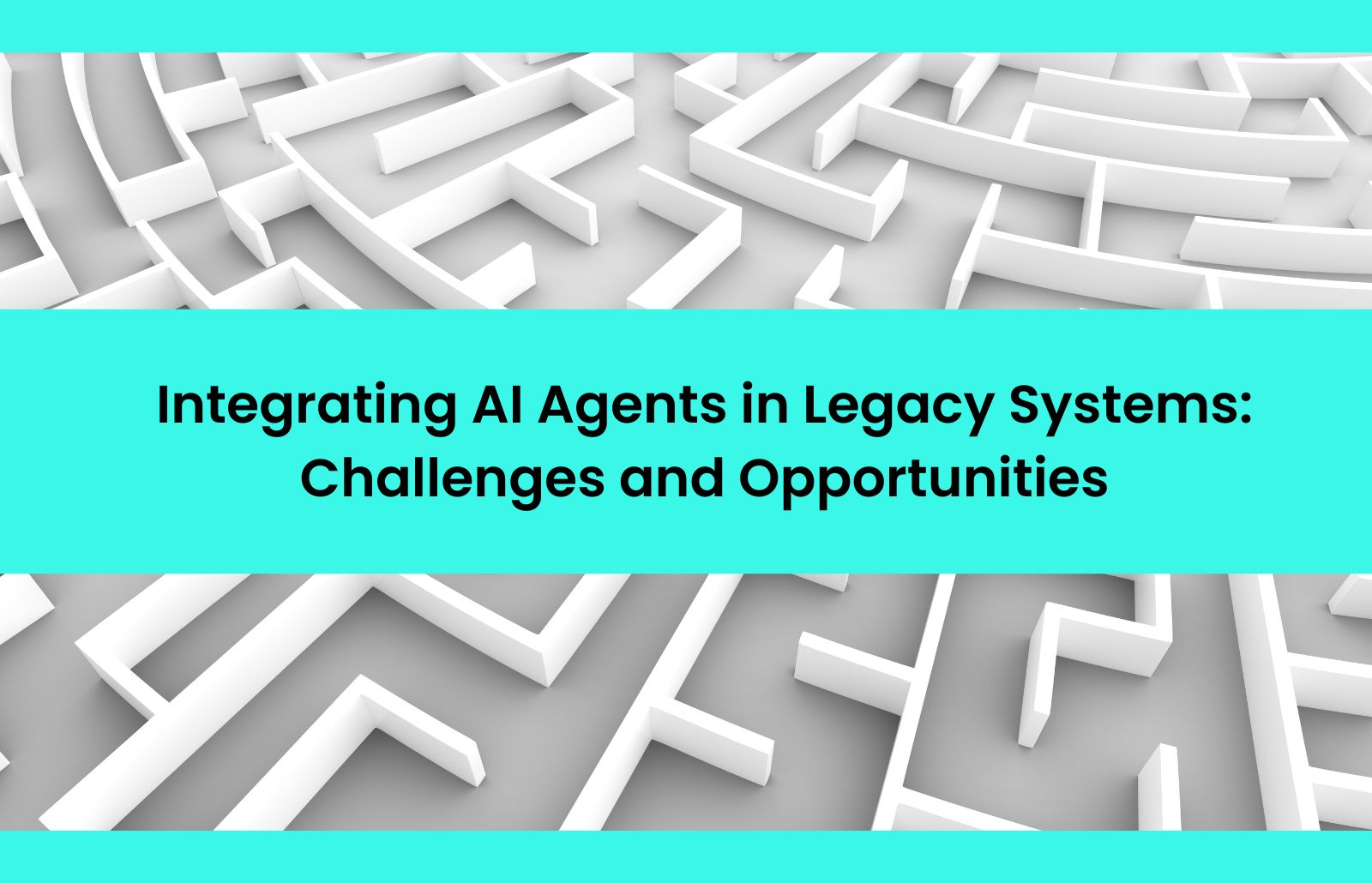As businesses strive to remain competitive in an increasingly digital world, the integration of artificial intelligence (AI) into existing legacy systems has become a pressing concern. AI agent integration offers a transformative approach, enabling legacy systems to become more intelligent, automated, and efficient. However, integrating AI agents into outdated infrastructures comes with its own set of challenges. This article explores the complexities and benefits of AI agent integration in legacy systems, highlighting key considerations for a successful implementation.
Understanding AI Agent Integration
AI agent integration refers to the process of embedding intelligent agents into legacy systems to enhance functionality, automate processes, and improve decision-making. AI agents leverage machine learning, natural language processing, and predictive analytics to perform complex tasks that previously required human intervention. From customer service chatbots to predictive maintenance in manufacturing, AI agent integration has the potential to revolutionize business operations.
Challenges of AI Agent Integration in Legacy Systems
1. Compatibility Issues
Legacy systems are often built on outdated architectures that lack compatibility with modern AI technologies. Many older systems use proprietary software, making it difficult to integrate AI agents without substantial modifications. Additionally, legacy systems may not support APIs or modern programming languages, further complicating AI agent integration.
2. Data Silos and Quality Issues
AI models rely heavily on data to generate accurate predictions and insights. However, legacy systems often store data in silos, making it difficult to access and consolidate information. Inconsistent or poor-quality data can lead to inaccurate AI-driven decisions, limiting the effectiveness of AI agent integration.
3. Computational Limitations
Many legacy systems were not designed to handle the high computational demands of AI algorithms. Integrating AI agents may require significant hardware upgrades or migration to cloud-based solutions to ensure adequate processing power and storage capabilities.
4. Security and Compliance Risks
AI agent integration introduces new security challenges, especially when dealing with sensitive data. Legacy systems often lack robust security measures, making them vulnerable to cyber threats. Additionally, industries with strict compliance requirements must ensure AI integration adheres to regulatory standards such as GDPR or HIPAA.
5. Resistance to Change
Many organizations face internal resistance when adopting AI-driven solutions. Employees accustomed to traditional workflows may view AI as a threat to job security. Successful AI agent integration requires change management strategies to address concerns, provide training, and highlight the benefits of AI-enhanced workflows.
Opportunities of AI Agent Integration in Legacy Systems
-
Enhanced Automation and Efficiency
One of the most significant advantages of AI agent integration is automation. AI can streamline repetitive tasks, reducing human effort and minimizing errors. For example, AI-driven chatbots can handle customer queries, freeing up human agents for more complex issues.
-
Data-Driven Insights and Decision-Making
By integrating AI agents, organizations can unlock valuable insights from legacy data. AI models can analyze historical patterns, predict trends, and provide actionable recommendations. This is particularly useful in industries like finance, healthcare, and manufacturing, where data-driven decision-making is critical.
-
Improved Customer Experience
AI-powered solutions enhance customer interactions by providing personalized responses and recommendations. For instance, AI-driven recommendation engines can suggest relevant products based on user behavior, while AI chatbots can offer real-time assistance, improving customer satisfaction.
-
Scalability and Future-Proofing
AI agent integration helps businesses scale their operations without significant infrastructure overhauls. AI solutions can be gradually integrated, allowing legacy systems to evolve without complete replacement. This future-proofing strategy ensures that organizations remain competitive in a rapidly evolving technological landscape.
-
Cost Savings
Although AI integration may require initial investment, it leads to long-term cost savings. Automation reduces labor costs, minimizes operational inefficiencies, and prevents costly errors. Predictive maintenance, powered by AI, helps organizations identify potential system failures before they occur, reducing downtime and maintenance expenses.
Strategies for Successful AI Agent Integration
1. Conduct a System Audit
Before integrating AI agents, organizations should assess their existing infrastructure to identify potential compatibility issues. A comprehensive audit helps determine whether system upgrades, API development, or cloud migration are necessary for seamless AI integration.
2. Leverage Middleware Solutions
Middleware acts as a bridge between AI agents and legacy systems, facilitating data exchange and compatibility. Middleware solutions enable organizations to implement AI capabilities without completely overhauling their existing infrastructure.
3. Adopt a Phased Approach
Rather than attempting a full-scale AI integration at once, businesses should adopt a phased approach. Implementing AI agents in small, manageable segments allows for testing, optimization, and gradual adoption, reducing risks and ensuring smoother transitions.
4. Ensure Data Readiness
High-quality data is essential for effective AI performance. Organizations must clean, standardize, and integrate data sources before deploying AI agents. Implementing data governance frameworks ensures consistency and accuracy in AI-driven decision-making.
5. Invest in Employee Training
AI integration success depends on employee readiness. Organizations should provide training programs to help employees understand AI functionalities, reduce resistance, and maximize productivity. Encouraging collaboration between AI and human workers enhances overall efficiency.
6. Prioritize Security and Compliance
AI agent integration must align with security best practices and industry regulations. Implementing encryption, access controls, and compliance audits ensures that AI solutions meet cybersecurity and legal requirements, reducing risks associated with data breaches and regulatory violations.
Use Cases of AI Agent Integration in Legacy Systems
1. AI in Banking and Finance
Banks and financial institutions leverage AI agents to detect fraudulent transactions, automate customer support, and provide personalized financial recommendations. AI-driven risk assessment models help lenders make informed credit decisions based on historical data.
2. AI in Healthcare
Legacy healthcare systems integrate AI to streamline patient record management, diagnose diseases, and personalize treatment plans. AI-powered chatbots assist patients with appointment scheduling and medical inquiries, improving healthcare accessibility.
3. AI in Manufacturing
Manufacturing companies use AI agents for predictive maintenance, quality control, and supply chain optimization. AI-driven analytics identify equipment failures before they occur, reducing downtime and improving production efficiency.
4. AI in Retail and E-Commerce
Retailers integrate AI agents to enhance customer experiences through personalized recommendations, automated inventory management, and demand forecasting. AI-driven chatbots assist shoppers with real-time product inquiries, improving customer satisfaction.
5. AI in Government and Public Services
Governments utilize AI to modernize legacy systems in public administration. AI-powered automation streamlines document processing, citizen services, and fraud detection, enhancing efficiency and transparency in government operations.
The Future of AI Agent Integration in Legacy Systems
As AI technologies continue to advance, AI agent integration will become more seamless and accessible. Emerging trends such as explainable AI, federated learning, and AI-driven edge computing will further enhance the capabilities of legacy systems. Organizations that proactively embrace AI integration will gain a competitive edge by optimizing processes, enhancing customer experiences, and future-proofing their operations.
Conclusion
AI agent integration in legacy systems presents both challenges and opportunities. While compatibility issues, data silos, and security concerns may pose obstacles, the benefits of automation, data-driven insights, and cost savings make AI integration a worthwhile investment. By adopting strategic approaches such as phased implementation, middleware solutions, and employee training, businesses can successfully integrate AI agents into their existing infrastructure. As technology evolves, AI-powered legacy systems will play a pivotal role in driving digital transformation across industries.


